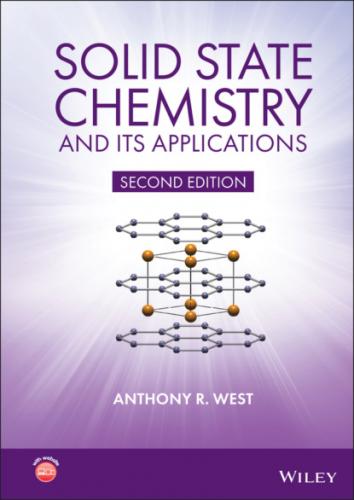11 Chapter 11Figure 11.1 (a) A parallel RC element, (b) definitions of resistivity and pe...Figure 11.2 Admittance equations and plots for a parallel RC element. Figure 11.3 Impedance equations and plots for a parallel RC element. Figure 11.4 Equations and plots for a parallel RC element in the M* formali...Figure 11.5 Equations and plots for a parallel RC element in the ε * formali...Figure 11.6 Impedance complex plane plot of a series RC element. Figure 11.7 (a) A series combination of two parallel RC elements, (b, c) cor...Figure 11.8 A parallel RC element in series with a capacitor. Figure 11.9 (a, b) A parallel RC element containing a CPE; logarithmic spect...Figure 11.10 Brickwork model for ceramics containing grains and grain bounda...Figure 11.11 Typical impedance response for a ceramic with conductive grains...Figure 11.12 Charge spill‐over at a non‐ohmic, sample‐electrode contact, ass...Figure 11.13 Schematic, idealised impedance of an oxide ion conducting ceram...Figure 11.14 (a) the Debye circuit for dielectric processes, (b) combination...
12 Chapter 12Figure 12.1 Schematic variation in density of states distribution with tempe...Figure 12.2 (a) Formation of a pn junction and (b) associated band structure...Figure 12.3 A thermocouple measuring circuit. Figure 12.4 Thermocouple emf vs temperature. Figure 12.5 Construction of a thermopile. Figure 12.6 Thermoelectric module for both cooling and power generation. Figure 12.7 Parameters that affect thermoelectric efficiency, zT and their d...Figure 12.8 Schematic temperature dependence of heat capacity; n refers to t...Figure 12.9 Correlation between thermal expansion coefficient and (a) electr...Figure 12.10 Variation of potential energy with interatomic distance between...Figure 12.11 Temperature‐dependence of the cubic unit cell parameter of ScF3...Figure 12.12 Schematic lateral displacement of bridging anions (yellow) lead...
13 Chapter 13Figure 13.1 The phase diagram Ti–TiO2. Figure 13.2 Free energy vs grain size for rutile, anatase and brookite. Figure 13.3 (a) Calculated electronic structures of (i) anatase and (ii) rut...Figure 13.4 XPS spectra and schematic density of states of black and white T...Figure 13.5 UV–vis absorption spectra of (a) pure TiO2, (b–d) Cr implanted T...Figure 13.6 Schematic diagram of a photo‐electrochemical cell for hydrogen g...Figure 13.7 (a) Photocatalytic water splitting: the potentials for the two h...Figure 13.8 (a) Schematic photo‐degradation of organics on TiO2 under UV irr...Figure 13.9 The four fundamental two‐terminal circuit elements: resistor, ca...Figure 13.10 How memristance works, based on the first TiO2‐based device. Th...Figure 13.11 Schematic operation of an Electrochemical Metallisation, or ECM...Figure 13.12 Structure of one of the 12 framework cavities that form the uni...Figure 13.13 (a, b) Optical absorption and (c, d) electrical conductivity of...Figure 13.14 (a) Magnetic susceptibility of two single crystals of C12A7 ele...Figure 13.15 Typical V/I response of a ZnO varistor ceramic showing three re...Figure 13.16 Schematic model of a double Schottky barrier showing (a) trap s...Figure 13.17 Crystal structures of (a) M3AX2 (b) M′2M″AX2 and (c) (M′2/3M″1/...Figure 13.18 Layer structure of hexagonal BN. Figure 13.19 Crystal structure of layered MoS2.
14 Chapter 14Figure 14.1 Glass‐forming oxides of p‐ block elements in the periodic table....Figure 14.2 Volume–temperature characteristics for crystals, liquid, underco...Figure 14.3 Heat capacity and entropy as a function of temperature for cryst...Figure 14.4 Estimation of ideal glass transition temperature, T 0. Figure 14.5 (a) Dependence of rate of crystallisation of an undercooled liqu...Figure 14.6 (a) A schematic 2D representation of sodium silicate glass struc...Figure 14.7 (a) Free energy–composition curves and (b) phase diagram for a s...Figure 14.8 Viscosity of B2O3 above the glass transition temperature; dashed...Figure 14.9 Rapidly‐cooled drops, or Prince Rupert Drops, of molten glass....Figure 14.10 (a) Schematic energy wells and barriers to conduction in a glas...Figure 14.11 (a) Viscosity of molten S as a function of temperature. (b) ...Figure 14.12 2D representation of the structure of (a) crystalline Ge and (b...Figure 14.13 Stages in photocopying. (a) Charging. (b) Exposure. (c) Dischar...Figure 14.14 Metastable liquid immiscibility dome in the system sodium tetra...Figure 14.15 (a) Schematic roller quenching method, (b) the Be‐Zr phase diag...Figure 14.16 Magnetisation curves for Fe75P15C10 (a, b) and Co78P22 (c, d). ...Figure 14.17 (a) single mode fluoride glass fibre; the core diameter is simi...Figure 14.18 Rates of homogeneous nucleation and growth in a viscous liquid. Figure 14.19 Two‐stage heating process used in the production of glass‐ceram...Figure 14.20 Three methods for bioglass production.
15 Chapter 15Figure 15.1 Stages in the manufacture and use of Portland cement. Figure 15.2 Subsolidus equilibria in the system CaO–Al2O3–SiO2. Typical comp...Figure 15.3 Melting relations in the lime‐rich corner of the system CaO–Al2O...Figure 15.4 Subsolidus phase diagram for the system CaO–Al2O3–Fe2O3. Composi...Figure 15.5 Schematic free energy relations for the polymorphism of C2S. Figure 15.6 Crystal structure of (a) Ca3Al2O6. (b) Tobermorite. (c) a...Figure 15.7 Development of compressive strengths on hydration. Figure 15.8 (a) Schematic free energy diagram for the C3S composition; polym...Figure 15.9 Schematic sequence of reactions involved in alkali activation of...Figure 15.10 Phase diagram for the system CaO–Al2O3. Figure 15.11 Progressive stages of sintering, starting from (a) a loosely co...Figure 15.12 The dihedral angle and its effect on the amount of grain‐to‐gra...Figure 15.13 Phase diagrams of the systems: (a) Al2O3–SiO2, (b) Fe3O4–SiO2, ...
16 Appendix BFigure B.1 To show the relation between ccp and the fcc unit cell. Figure B.2 The cp layers in a ccp structure. Figure B.3 Templates for making tetrahedra and octahedra. Figure B.4 Some polyhedral linkages.
17 Appendix CFigure C.1 Relation of a tetrahedron to a cube. Figure C.2 Relation of an octahedron to a cube. Figure C.3 Hexagonal unit cell; c/a = 1.633.
18 Appendix EFigure E.1 The
